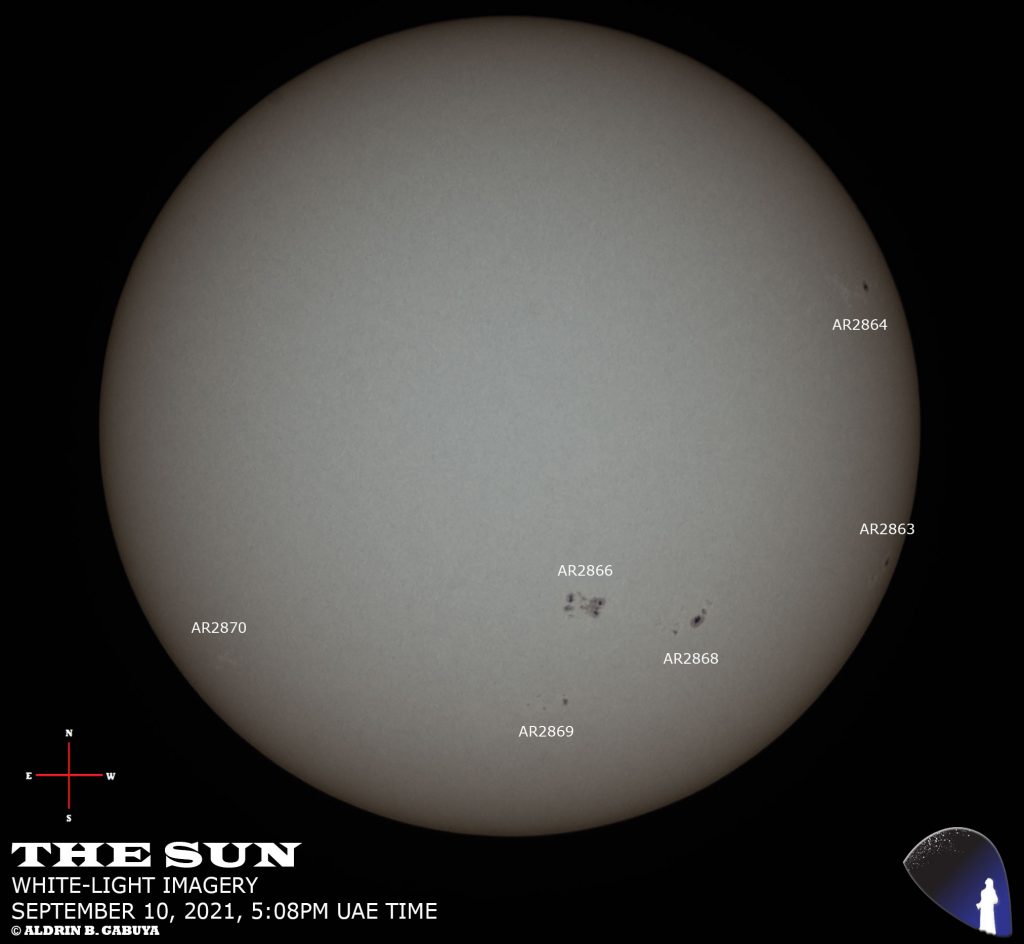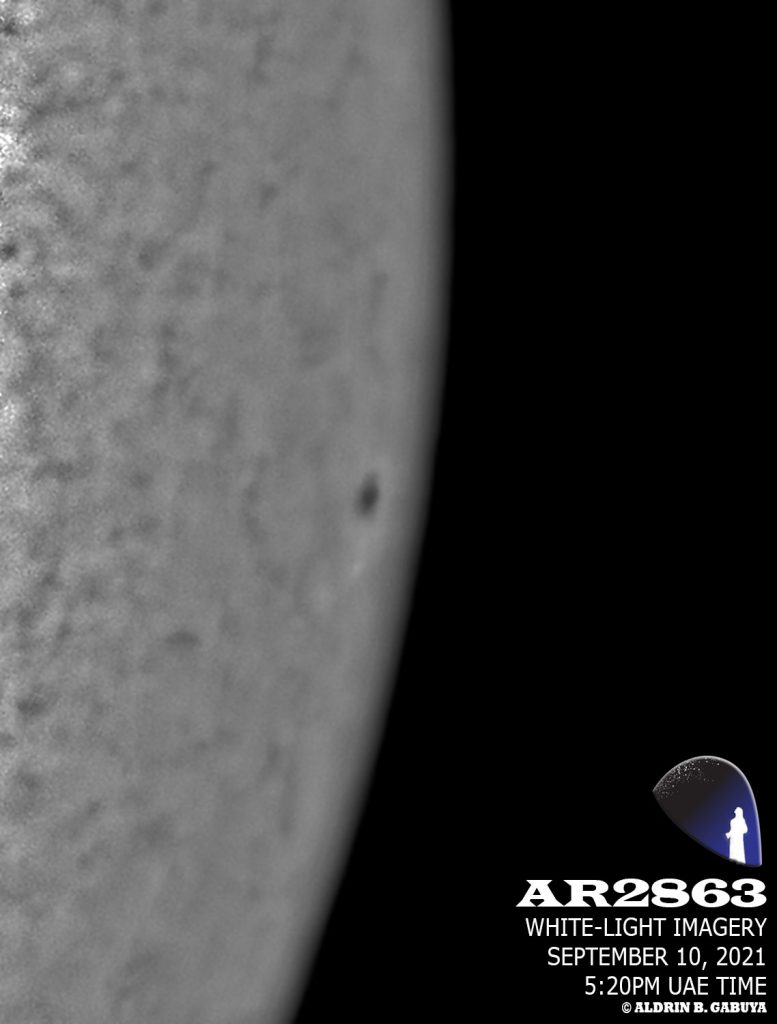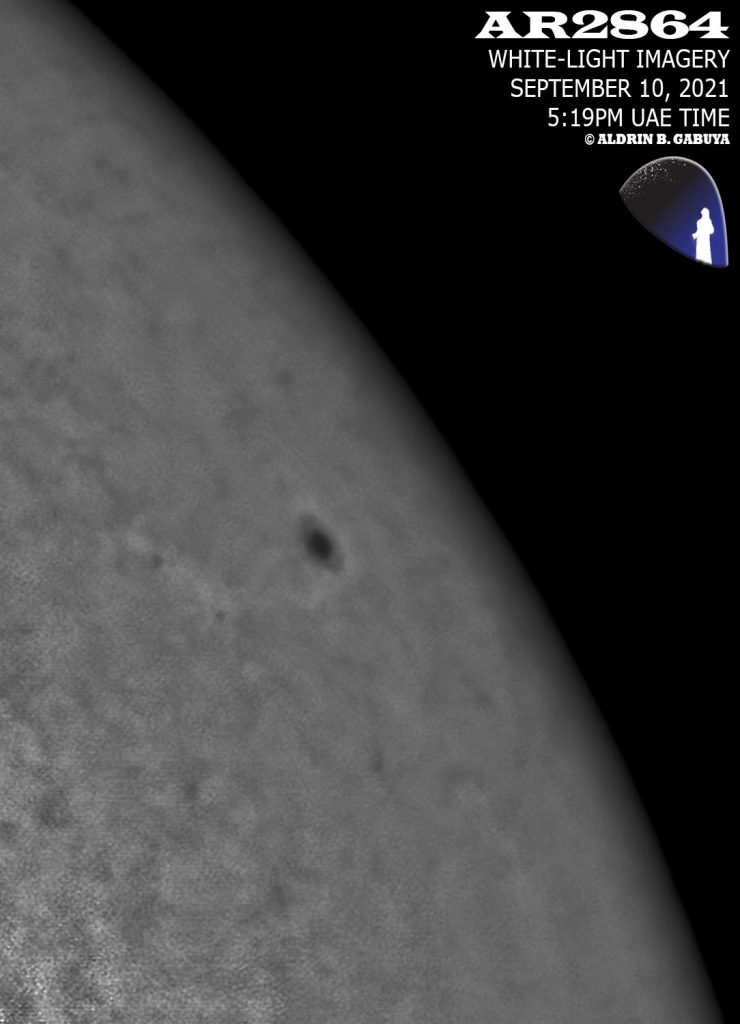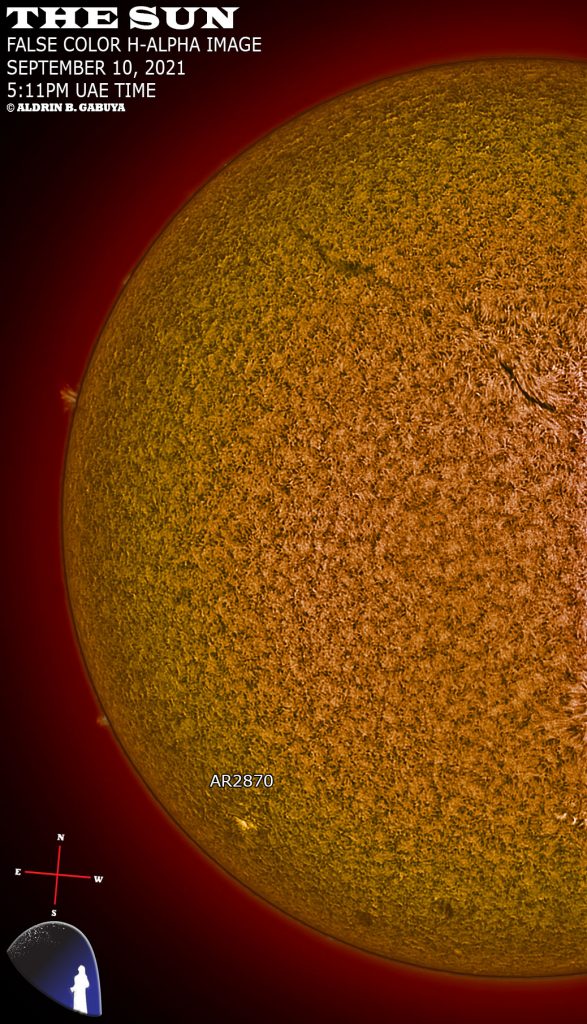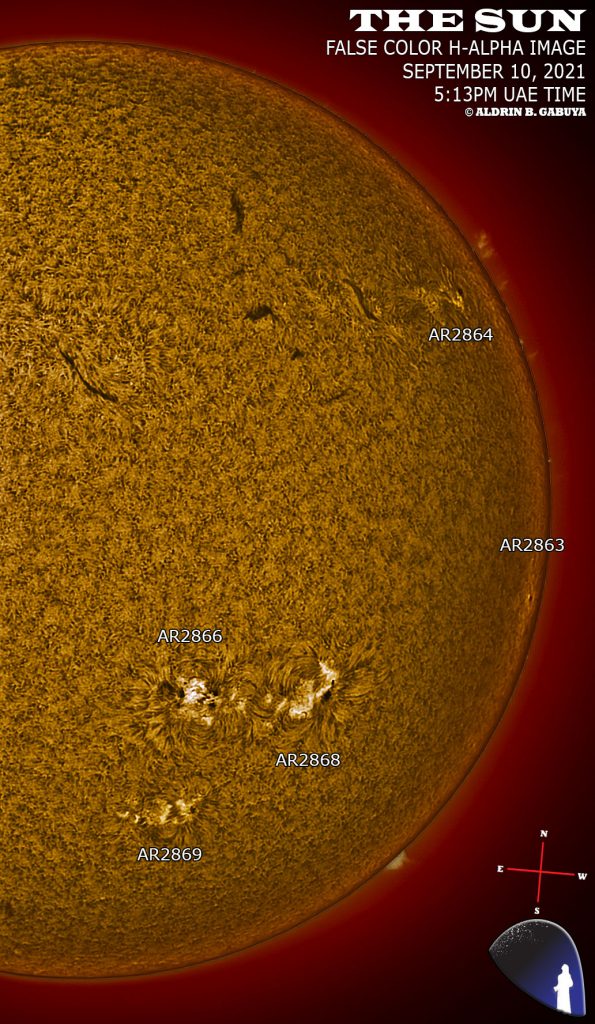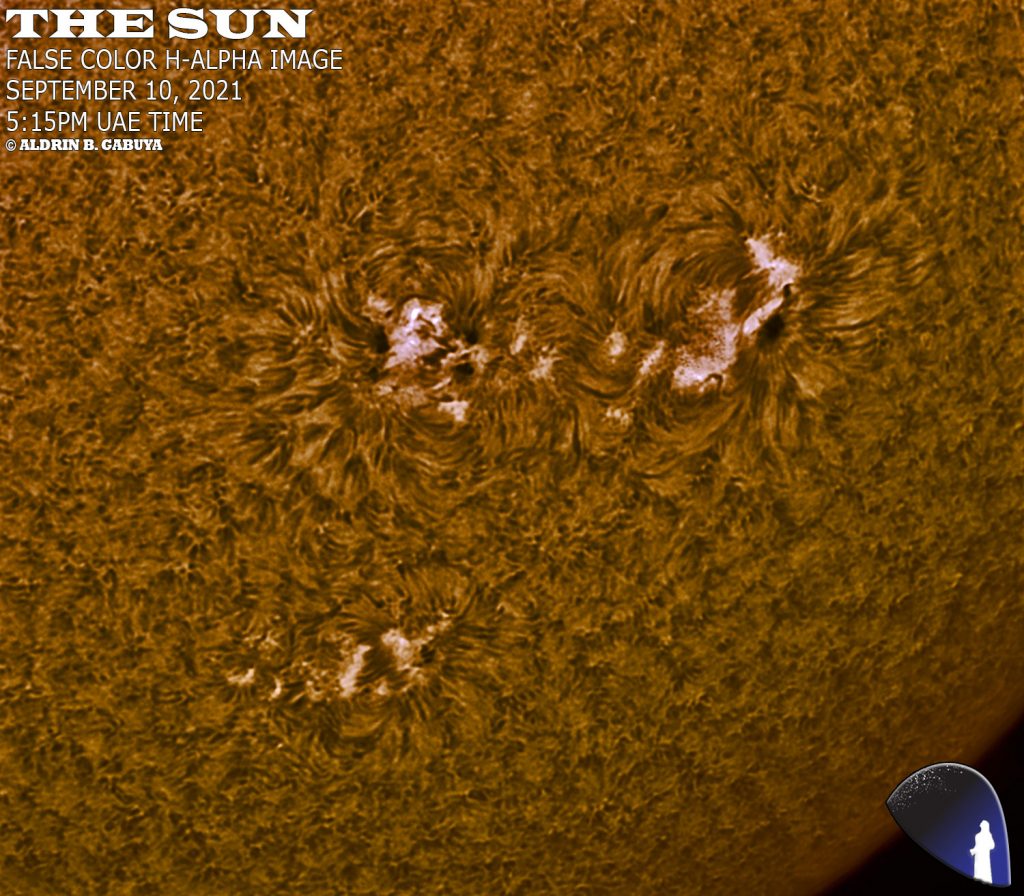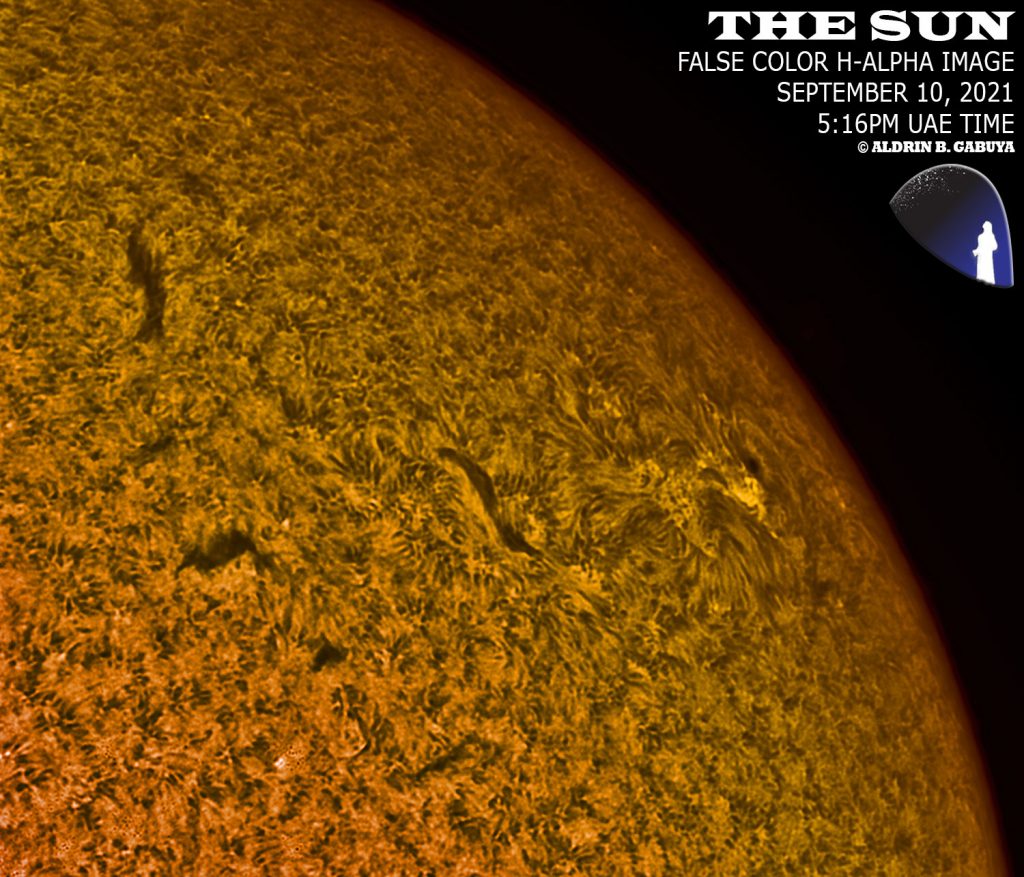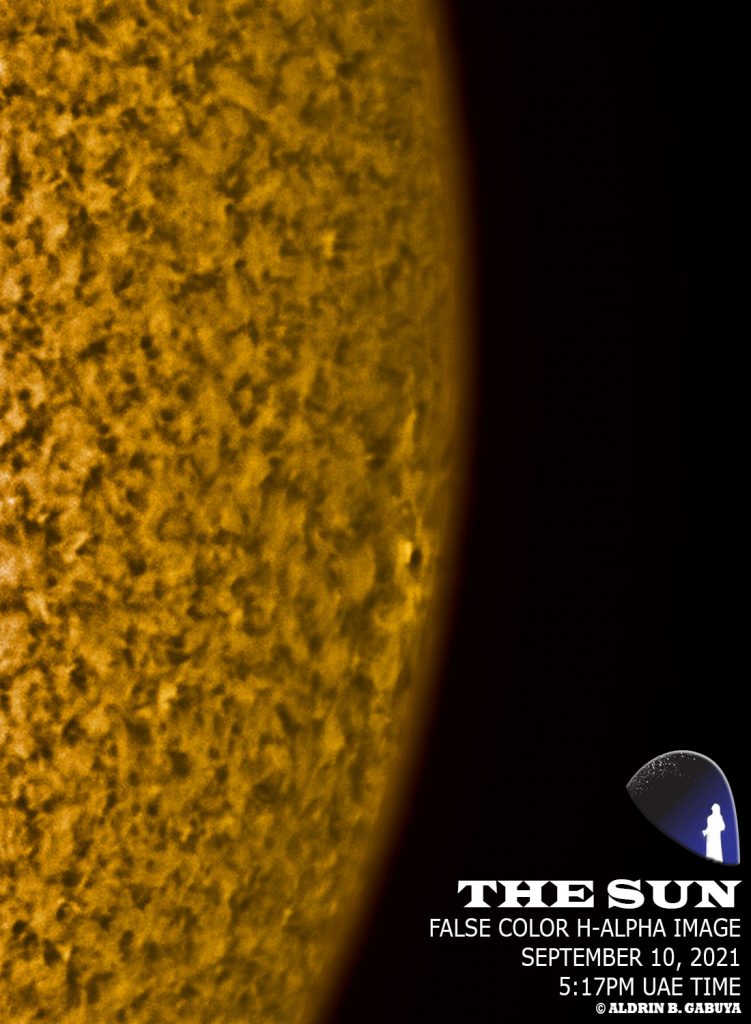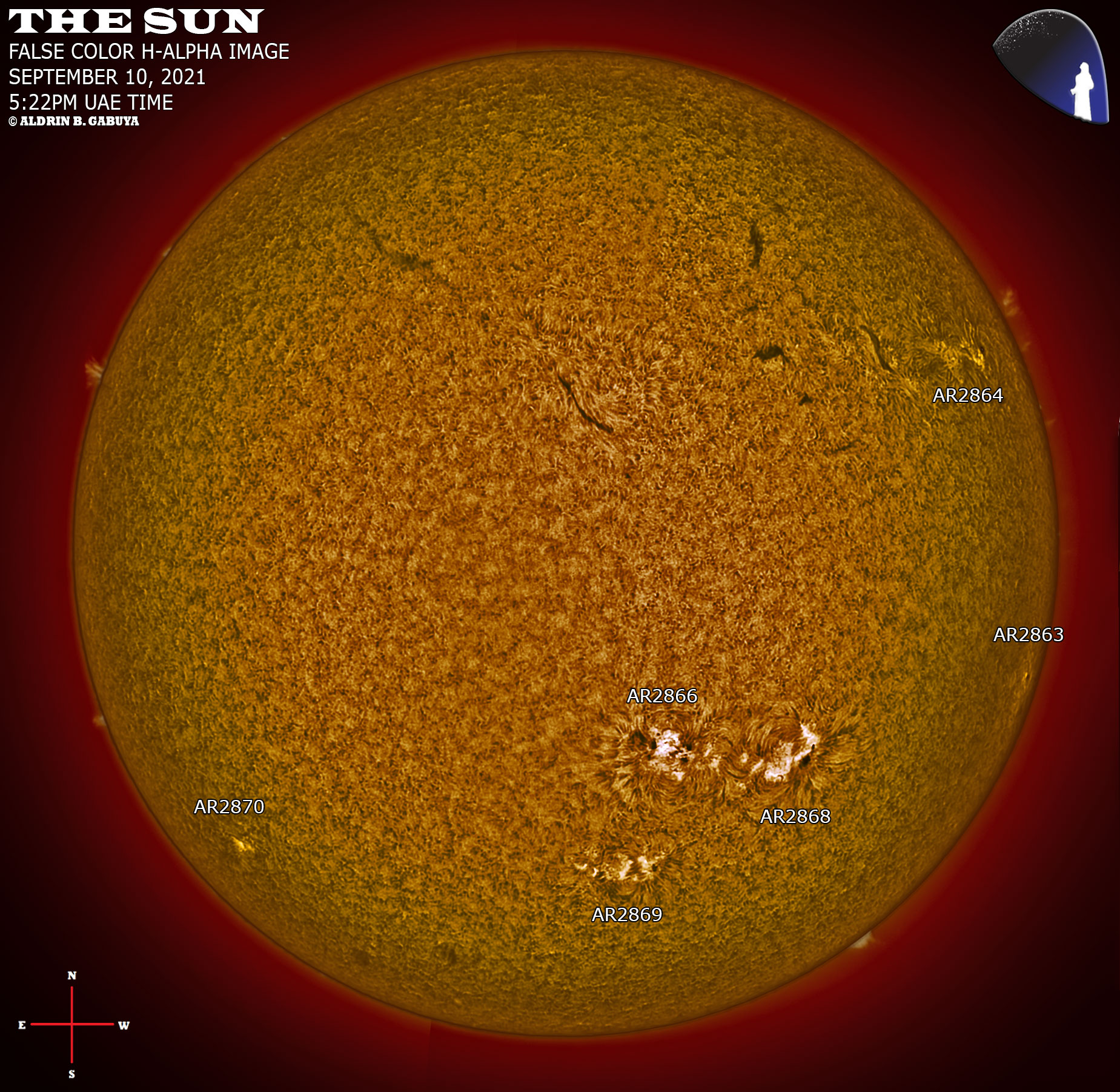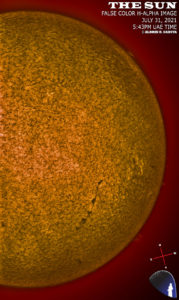Here are today’s solar images taken from Al Sadeem Observatory, September 10, 2021.
The sky was partly cloudy with slight haze and moderate breeze which provided average to poor transparency and seeing at the time these images were taken.
A gradual decrease in intensity from low to very low solar activity was observed over the past 24 hours. AR2863 (Hsx/alpha) has not changed much in structure appearance and remained quiet while approaching the SW limb. AR2864 (Hsx/alpha) had its trailer spots decayed with its huge unipolar spot remaining intact and also remained dormant. The same circumstance was observed in AR2869 (Cso/beta) and to the newly designated small sunspot group AR2870 (Axx/alpha) (tiny unipolar spot barely visible) with no significant flaring activity produced at the moment.
AR2868 (Dki/beta-gamma) attained mixed polarity after some development of a few additional trailer spots but shrunk shortly, produced a B7.0-class solar flare recorded late yesterday evening (Sept. 9). On the other hand, the largest among the 6, AR2866 (Dkc/beta) exhibited further consolidation of sunspot structure which in turn grew out in size moderately. However, it produced only B-class solar flares; peaked at B8.0-class intensity recorded late yesterday afternoon (Sept. 9).
The latest sunspot number (based on visual count and Wolf number calculation) is 95.
Other solar features observed were scattered enhanced plages along the trailer section associated with the upper-mentioned sunspot groups, some short stable filaments near the active regions and the northern hemisphere, and small faint quiescent prominences at the SW, NW and NE limbs, as distinctively captured in H-alpha imagery.
Space weather agencies* expect low solar activity to persist (though a slight decrease expected) with the likelihood of B-class to C-class solar flares in the next few days, mainly from large sunspot groups AR2866 and AR2868. Close monitoring is being conducted by numerous space weather agencies for any significant development.
Equipment used are Skywatcher 120mm refractor telescope with Baader filter and unmodified Canon EOS 1D Mark IV DSLR camera for visible imagery. For H-alpha imagery, the equipment used are Lunt 60mm H-alpha solar telescope, and QHYCCD 290III mono camera; all mounted on Skywatcher EQ6 pro mount Pre-processing of visible solar images was performed in PIPP, stacking in Autostakkert, slight wavelet adjustments in Registax 6, and post-processing in Adobe Photoshop CC.
*TECHNICAL REPORTS COURTESY OF SOLAR INFLUENCE DATA CENTER (SIDC), NOAA-SPACE WEATHER PREDICTION CENTER (NOAA-SWPC)
Weather Data (5:00 PM – 5:30 PM, September 10, 2021, from NCM Al Wathba Station):
Average Temperature: 40.23°C
Average Humidity: 38.67%
Average Wind Speed and Direction: 21.73 kph from WNW
Average Cloud Cover: 60%
Average Air Pressure: 998.0 hPa
Average Solar Radiation: 183.0 W/m^2


